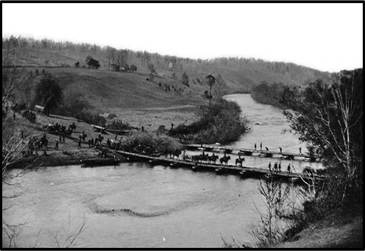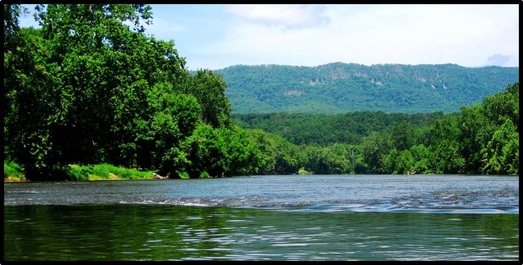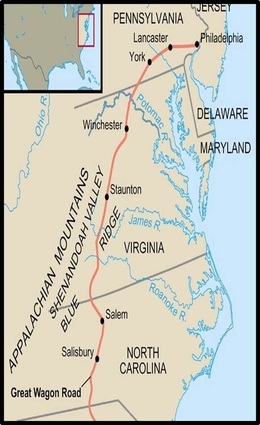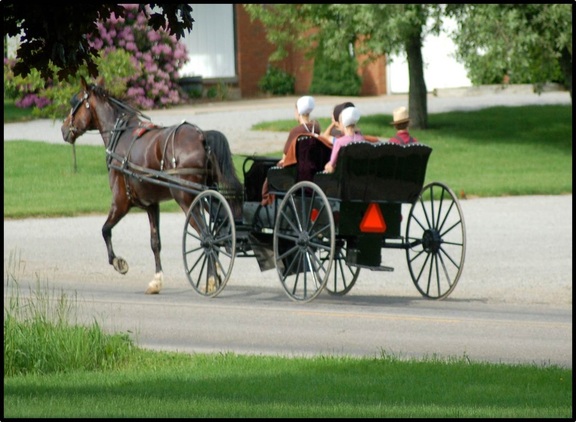Governor Alexander Spotswood and the Knights of the Golden Horseshoe
Correlation to the Virginia Standards of Learning: VS.2a-c, VS.4b, USI.8b, VUS.2

Alexander Spotswood served as the Royal Governor of Virginia from 1710-1722. As Governor, Spotswood successfully negotiated treaties with Native American tribes, promoted westward settlement, and helped stimulate economic development throughout the colony. He also was the first governor to occupy the new Governor’s Palace that was built in Williamsburg after the state capital was moved after the burning of Jamestown.
 Germanna Ford on the Rapidan River
Germanna Ford on the Rapidan River
In 1714, Governor Spotswood established a new settlement of German immigrants in the Piedmont foothills of central Virginia. He referred to the new colony as “Germanna” – a dual reference to the ethnicity of the settlers as well as a tribute to Queen Anne of England. Spotswood specifically advertised the new Virginia settlement in the mountain states of Germany in order to recruit miners that could bring their valuable skills to the New World. These settlers soon established an ironworks on the Rapidan River near present-day Spotsylvania County. Spotswood later carved out a massive estate in Germanna and built his mansion on the Virginia frontier.
 The view from Bearfence Rocks on Skyline Drive – some believe this was the rock outcropping that the expedition summited.
The view from Bearfence Rocks on Skyline Drive – some believe this was the rock outcropping that the expedition summited.
In 1716, Governor Spotswood organized the first expedition of European settlers to cross the Blue Ridge Mountains. The looming mountain crossing led the members of the expedition to shoe their horses before leaving Germanna. As a plea for good luck, Spotswood referred to his party as the “Knights of the Golden Horseshoe.” Spotswood and sixty-three men followed the Rapidan River to its source and crossed the Blue Ridge at Swift Run Gap. This location actually marked the narrow boundary between the respective watersheds of two mighty rivers of Virginia; from this spot, the Rapidan flows east past Germanna to join the Rappahannock River near Fredericksburg, and Swift Run flows southeast to join the James River near Fork Union.
A member of the expedition later recalled, “About one of the clock we got to the top of the mountain; about four miles and a half, and we came to the very head spring of the James River, where it runs no bigger than a man’s arm, from under a large stone. We drank King George’s health, and all the Royal Family’s, at the very top of the Appalachian mountains....We found some trees which had been formerly marked, I suppose, by the Northern Indians, and following these trees, we found a good, safe descent. Several of the company were for returning, but the Governor persuaded them to continue on."
A member of the expedition later recalled, “About one of the clock we got to the top of the mountain; about four miles and a half, and we came to the very head spring of the James River, where it runs no bigger than a man’s arm, from under a large stone. We drank King George’s health, and all the Royal Family’s, at the very top of the Appalachian mountains....We found some trees which had been formerly marked, I suppose, by the Northern Indians, and following these trees, we found a good, safe descent. Several of the company were for returning, but the Governor persuaded them to continue on."
 South Fork of the Shenandoah River near Elkton
South Fork of the Shenandoah River near Elkton
Spotswood and his men descended into the Shenandoah Valley near present-day Elkton and crossed the South Fork of the Shenandoah River. They celebrated by firing volleys into the air and making several toasts with wine and brandy. The expedition also buried a bottle on the riverbank that contained a piece of paper that claimed the lands west of the Blue Ridge for King George I of England.
Spotswood and his men descended into the Shenandoah Valley near present-day Elkton and crossed the South Fork of the Shenandoah River. They celebrated by firing volleys into the air and making several toasts with wine and brandy. The expedition also buried a bottle on the riverbank that contained a piece of paper that claimed the lands west of the Blue Ridge for King George I of England.

Spotswood later wrote to King George to formally request the new land grant. When he referred to his men as the “Knights of the Golden Horseshoe” in his letter, the King supposedly sent fifty miniature golden horseshoes along with his approval of the land grant request. Governor Spotswood distributed these ornaments to his men and tales of their journey soon spread across the colony. Rumors of the fertile valley led a German settler named Adam Mueller (Miller) across the mountains sometime during the late 1720s. The beauty of the virgin landscape immediately captured his imagination, and he returned with his wife to establish a homestead near Lithia Spring north of present-day Elkton. Mueller is considered to be one of the first pioneers to settle in the Shenandoah Valley.
Despite the success of the Spotwood and Mueller expeditions, the Blue Ridge Mountains continued to serve as a barrier to westward settlement beyond the Piedmont region. Most settlers of the Shenandoah Valley actually traveled south from Pennsylvania and Maryland along the Great Wagon Road that ran between the Blue Ridge and Allegheny Mountains. Many of these settlers were Mennonites and German Dunkards (Brethren) that sought the religious freedom offered by the isolation of the Virginia frontier. For example, Elder John Kline of Broadway was born in Pennsylvania and his family migrated to the Shenandoah Valley along this route. Today, Spotswood High School in Penn Laird, Virginia is named in honor of Governor Spotswood because of its proximity to the mountain crossing. Route 33 that runs in front of the school is known as the "Spotswood Trail."
SOURCES:
Kemper, Charles E. "Adam Muller (Miller), First White Settler in the Valley of Virginia." Virginia Historical Magazine 24 April 1902: 84-86. Print.
Wayland, John. A History of Rockingham County, Virginia. Dayton, Virginia: Ruebush-Elkins Company, 1912.
Kemper, Charles E. "Adam Muller (Miller), First White Settler in the Valley of Virginia." Virginia Historical Magazine 24 April 1902: 84-86. Print.
Wayland, John. A History of Rockingham County, Virginia. Dayton, Virginia: Ruebush-Elkins Company, 1912.



